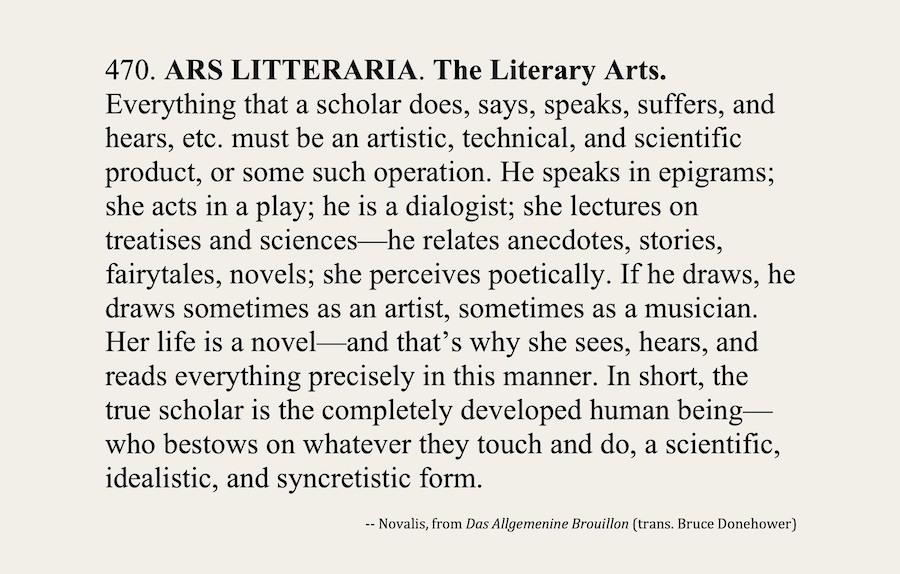“He hovered. like a cloud . . .
like an element of nature, active in rain and sunshine.”
— Rudolf Steiner,
describing the Prophet Elijah;
September 17, 1912
Easter – Pentecost 2024
Dear Friends,
This page began as a resource page for students in the April, 2024 Chrysalis Course: “Why Should I Care About Novalis?” The course began on April 9, 2024, and it finished on April 30, 2024. It was sponsored by the American Anthroposophical Society and was an offering arising from the work of the Section for the Literary Arts and Humanities of the School for Spiritual Science in North America.
Admittedly, most people probably haven’t heard or bothered with the early romantic German poet Friedrich von Hardenberg (Novalis), although this is not the case in anthroposophy, where Rudolf Steiner and Marie Steiner pioneered the anthroposophical movement upon the inspirations and guidance of Novalis. Yet, even in anthroposophy, Novalis poses problems for folks, and the question often arises: “Why Should I Care About Novalis?”
In this ASA-sponsored Chrysalis course, I focused primarily on Rudolf Steiner’s reading of Novalis, rather than the literary Novalis — and I explained what I meant by that distinction in an attempt to answer the question “Why Should I Care About Novalis?”
On this page you can find the edited video lectures from the four-session class, in addition to the resources that I posted for the class. The older materials have been on this website for a number of years, but I included them here in one place to make things helpful.
Chrysalis Lecture One / The “Novalis” Problem
Chrysalis Lecture Two / Unavailable
Chrysalis Lecture Three / “Ordo Inversus”
Chrysalis Lecture Four / “The Blue Flower”
Literary Resources
The Poet Novalis / Friedrich von Hardenberg (1772-1801) / Biography and Context
Videos
Introduction to Novalis
Ludwig Tieck (Novalis’ Best Friend) Describes Novalis
The Path of the Poet
The Birth of Novalis
The Way of Philo-Sophie
Aphorisms of Novalis
Tour the Castle Where Novalis Wrote “Hymns to the Night”
Novalis and the Healing Art of Fairytale
Kathleen Raine; Novalis & William Blake
Performance Videos of Works by Novalis (Made by Section Artists)
Geistliche Lieder (Spiritual Songs) / Lied 1 (German)
Songs of the Spirit (Geistliche Lieder) / Song One (English / Scroll to Timestamp 15:41)
Alle Menschen seh ich Leben (All Around I see the Living) / Novalis’ Last Poem
The Fairytale of Hyacinth and Rosebud (from The Apprentices at Sais)
The Fairytale Atlantis (from Heinrich von Ofterdingen)
Selected Readings
(Click titles for information)
Bruce Donehower: The Birth of Novalis / How Friedrich von Hardenberg became the poet Novalis / Told in Hardenberg’s Own Words; with letters and contemporary eye-witness testimonies.
Sergei O. Prokofieff: Eternal Individuality: Towards a Karmic Biography of Novalis (out of print)
Penelope Fitzgerald: The Blue Flower (prize-winning 1990s novel about Fritz and Sophie)
Andrea Wulf: Magnificent Rebels: The First Romantics and the Invention of the Self (early German romanticism made fun and readable)
Novalis: Hyacinth and Rosebud; with Afterword “The Healing Art of Fairytale”
Novalis: Atlantis; with Afterword
Goethe: The Fairy Tale of the Green Snake and Beautiful Lily; with Afterword “Goethe in Paradise”
Rudolf Steiner: “Last Address” / September 28, 1924
Rudolf Steiner: “The Raising of Lazarus” / Chapter 8 in Christianity as a Mystical Fact, 1902
Rudolf Steiner: “Novalis the Seer” / Lecture on December 22, 1908
Rudolf Steiner: “Spiritual Economy” / Lectures January to May, 1909
Rudolf Steiner: The Spiritual Guidance of the Individual and Humanity” / Lectures in June 1911
Rudolf Steiner: “Buddha and Christ: The Sphere of the Boddhisattvas” / Milan, September 21, 1911
Rudolf Steiner: “Elijah” Lecture Five in “Turning Points in Human History” / Berlin, December 14, 1911
Rudolf Steiner: The Guardian of the Threshold (1912)
“A hall in a prevailing tone of indigo blue. The ante-chamber to the rooms in which a Mystic League carries on its work. In the centre a large door with curtain. Above it is the Rosy Cross. On each side of the door two pictures which represent, beginning from the right of the stage, the Prophet Elijah, John the Baptist, Raphael, the poet Novalis. There are present, in lively conversation twelve Persons, who in one way or another take an interest in the activities of the League.”
Grand Master Hilary True-to-God speaks:
“In that spirit’s name who has revealed himself
to many souls within this holy place,
we now appear before these persons who,
till now, were not allowed to hear the words
that here resound mysteriously.
The powers who guide our progress on the earth
could not, in the remotest days of yore,
reveal themselves in light to everyone.
For it was as with children; gradually
the forces had to be matured and strengthened
that were designed to carry on our knowing.
So was it that mankind in general
had slowly to unfold in course of time.
In darkness lived at first those impulses
that later came to show themselves as worthy
to see the spirit-light from higher worlds.
In those remotest days when earth began,
great spirits were sent down from higher worlds
to be the wise and watchful guides of men.
They cultivated in the sanctuaries
those spirit-forces that could penetrate
mysteriously into the souls, who had
no conscious knowledge of their leaders.
And later the wise masters found that they
could choose, from out the ranks of men, disciples
who, through renunciations and fierce tests,
had proved mature enough to be initiated
into the sacred wisdom of the mysteries.
And when the pupils of the early masters
learned to protect the treasures worthily,
those mighty teachers took their way again
back to their own far-distant habitations.
The pupils in their turn selected men
who could succeed them in the watchful care
of spirit treasures, so it went on further
through generations numberless to us.
And to this day all genuine mystic schools
descend directly from that earliest one,
which was established by the higher spirits.
Humbly we cultivate within these walls
what has been left us by our ancestors.
Never will we assert that our own merits
deserve the offices that we now fill:
the lofty spirit-powers choose by grace
the feeble men they need as messengers,
and to them they entrust the precious treasures
that can unbind the spirit’s light in souls.
And it is to these treasures, my dear friends,
that we must give you access at this time.
Auspicious are the signs that we can see
with spirit-sight in the world’s destiny.”
— Rudolf Steiner, from The Guardian of the Threshold; Scene 1

“The Literary Arts” / A Fragment Used as a Verse at Many Section Meetings
For me personally, this solved the problem of Rudolf Steiner’s last words, which has preoccupied us all ever since . . . For I saw that John the Baptist and Lazarus were the same being, that through the whole series of incarnations from Phinehas through John the Baptist and Lazarus to Novalis, the spirit of Elijah was the essential agent. And I was filled with awe when I realized that the millennia-long preparatory work of the mighty spirit of Elijah found its culmination in the initiation [of Lazarus-John] by the Christ himself . . .”
— Adolf Arenson, close student of Rudolf Steiner / from a lecture given in Dornach in 1931 (out of print)
3.31.24

